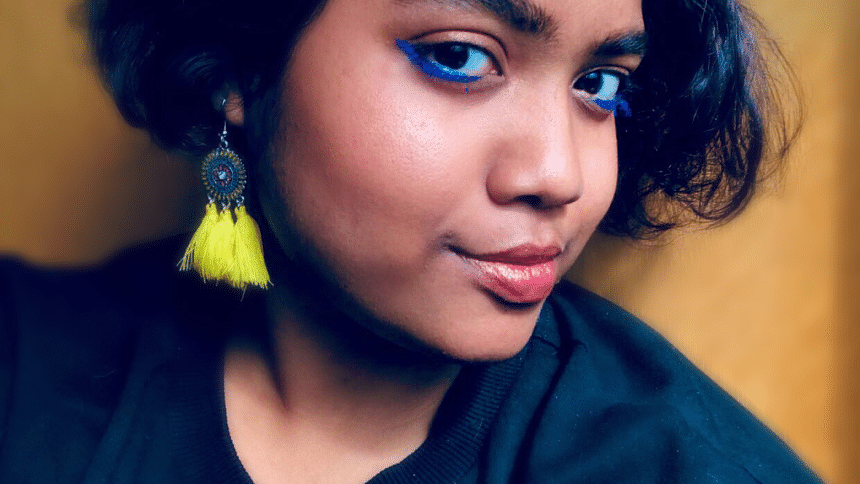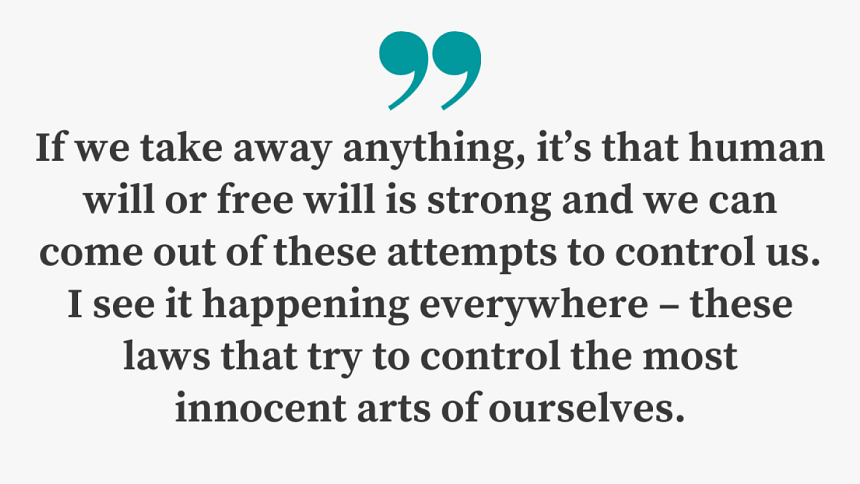‘My job is to take someone’s experience and make it visible’

On August 21, 2022, Fahmida Azim, a Bangladesh-born, Seattle-based artist and journalist, was awarded the 2022 Pulitzer Prize for Illustrated Reporting and Commentary. The winning team – comprising Fahmida Azim as artist, Josh Adams on art direction, and Anthony Del Cole as the writer – won the award for 'How I escaped a Chinese internment camp'. It is a visual story of Zumrat Dawut, a woman from China's Xinjiang region who survived the abduction and internment of Muslims in Chinese camps. Daily Star Books editor Sarah Anjum Bari speaks with Fahmida Azim about her work with The Insider and about the responsibilities of visual storytelling.
How did you begin working on your story for The Insider? Why is this story important to you?
The Insider reached out to me about this interview that they did with Uyghurs. They already had the script written. I looked at the script and we hashed out how the story was going to look between me, Josh Adams and Antony Del Cole. I suggested images, edited the script along the way.
We talked to an interpreter who talked to Zumrat for us. We had long emails back and forth. Anthony and Josh had already done the interview with them. I as the artist talked to them about their experience and the visual parts of it to get the accuracy right – the uniforms, the backgrounds, the kind of people around them.
This particular story needed illustration because we don't really have images of the [Uyghurs'] experiences, we can't go into the facilities. We only have aerial shots of the camp that were being built. My job as an illustrator is to take someone's experience – their words, the feeling of the story – and make it visible, make it something you can feel and see and understand.
The power of this story is part of the reason the people over at the Pulitzer Prize thought that it would be symbolic of why this medium is important. It's a recognition that comics and the visual medium are just as valid for telling a story as the written word.

What goes into trying to give shape – structure, chronology, clarity – to memories that are so traumatic and chaotic?
You have to put yourself in the place of the audience and in the emotions that are being felt, and you have to know your medium. Because you're scrolling down, the longer you make the image, the longer you let it linger, the more the gravity of the situation sinks in. When you let the gravity fill the screen, the more the audience feels as overwhelmed as the person going through it.
I would go and do my own research, I'm not just going off of what she's saying. I'm also going off of other eye witness accounts, the uniforms that were worn, the weapons and vehicles that were used. How Zumrat might have looked while she was there versus how the hypernational propaganda machine might have looked like. To ground her story, her chaotic memory, we make all the details look very specific.
I looked into interviews with other Uyghurs, documentaries about different Chinese policies and surveillance technologies, how many cameras there are, how the cameras track you, the social currency system. There were also specific torture devices – she would describe being strapped to a chair in a basement and I would go out and find that specific device and how it's used on other people, and recreate the schematics of it.
It's evident from your comics that they invaded her space in every way possible – in terms of her body, her reproductive rights, what she could say.
There was a lot of propaganda that she mentioned. Having to go to these counselling sessions. She was tied up when she was at the police station. In her everyday life it was reinforced that she couldn't believe in Allah because she was being surveilled. Even if she inadvertently said or whispered that she believed in Islam, the guards would come and beat her. It was beaten into her that she could not speak of her religion.
The controlling of not just her body but her future and her past and her organs – they sterilised her without her consent. The attempt to control her will, the amount of resources and time, the whole world pouring down on her like that, it just makes the fact that they weren't able to break her extraordinary.
If we take away anything, it's that human will or free will is strong and we can come out of these attempts to control us. I see it happening everywhere – these laws that try to control the most innocent arts of ourselves. France banning the hijab. The abortion laws being passed in America. It's disheartening and scary. I feel like Zumrat lived the logical conclusion of when they try to control every aspect of us. She lived the logical conclusion of fascism. That makes it even more necessary to fight for what we have and where we have it.
Talking to her, I had a lot of nightmares for weeks.
How did you cope with that?
I'm not a stranger to depicting traumatic experiences. I've done stories about femicide, Rohingya refugees, Iranian journalists getting lashed… it's part of the journalism beat that I do. I think the way I do it is by also doing lighthearted things that show women and girls living with full bodily autonomy.
I specifically gravitate towards stories that deal with our autonomy. I don't think we give the ordinariness of humans a good shot. All of the things we love – sc-fi, fantasy, even animals – we love the humanness of it, because we are humans, and it's something we should explore and celebrate.
How does one break stereotypes? And is the media language used to represent minorities doing them justice?
I think the way you break stereotypes is by not pandering to the people stereotyping you. Instead, turning to your fellow Muslim women or fellow minority, helping each other live the life they want to live. Then people looking in from the outside get that we are self-sufficient and it is complex and desirable and joyful to be us.
I don't want to talk about the media as if it is one broad brush, especially in these times when we're scattered in our use of media. The times when the media is nuanced is usually when we include the people we're talking about into the conversation. So, when we're talking about people from the Middle East, if we bring in experts and people living in that area, surviving that disaster or event that we're talking about, that's when we can have more balanced reporting.
So often we fall for the trap of talking about someone instead of talking with them and letting them talk for themselves. You need multiple lenses of their point of view. As journalists and artists, we shouldn't be dictating what's happening out there, we should be exploring.
It seemed like Zumrat was keen on talking about her experiences. But what about when the subject doesn't want to speak? How do you respect their privacy while telling a story that needs to be told?
It always has to be consensual. It's up to us to find the person who wants to hold the megaphone.
I wasn't actually the first person they had in mind for the story. They went to the first artist and she said her day job is with a firm that has to work with Chinese companies and she didn't want to lose her job. The second artist they went to lives in a country where the Chinese have a lot of influence. Their life could be in danger if they worked on this story. Eventually they found me.
They could've stopped trying to get a Muslim woman or a person of colour who would understand Zumrat's point of view. They kept trying. You will find a person who's going to tell their story if you just look. If you can't find them, perhaps you need to find a different angle.

 For all latest news, follow The Daily Star's Google News channel.
For all latest news, follow The Daily Star's Google News channel. 







Comments